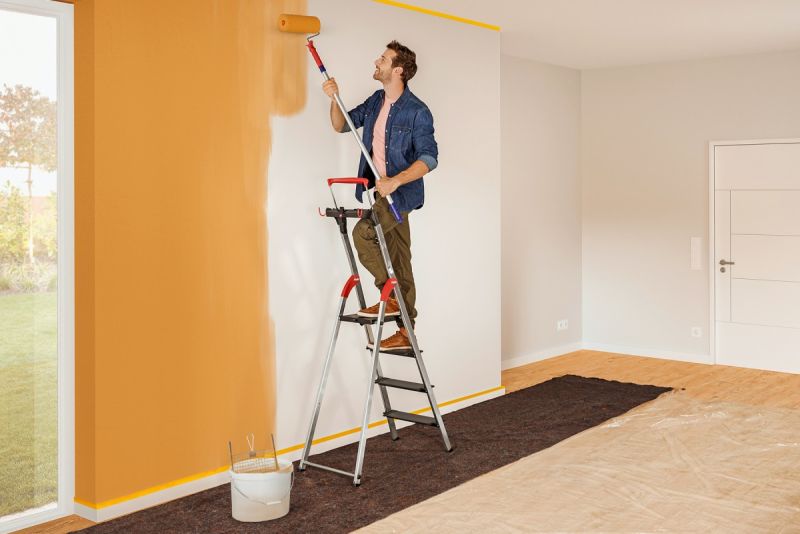
House painting involves the application of paint or other protective coatings to the exterior or interior surfaces of a residential building. The primary purposes of house painting are to enhance the aesthetic appeal of the home, protect it from the elements, and increase its overall durability. This process can be done for both functional and decorative reasons. Here are key aspects of house painting:
- Exterior Painting:
- Surface Preparation: Before painting the exterior, surfaces need to be properly prepared. This may include cleaning, scraping off old paint, filling cracks or holes, and priming.
- Choosing Paint: Selecting the right type and color of paint is crucial. Exterior paints are designed to withstand weather conditions, such as rain, sunlight, and temperature fluctuations.
- Application Techniques: Exterior painting may involve using brushes, rollers, or sprayers, depending on the surface and the desired finish.
- Interior Painting:
- Surface Preparation: Similar to exterior painting, proper preparation is essential for interior surfaces. This may involve cleaning, sanding, and patching holes or imperfections in the walls.
- Choosing Paint: Interior paints come in various finishes (e.g., flat, satin, semi-gloss) and are available in a wide range of colors. The choice depends on the desired look and the function of the space.
- Application Techniques: Interior painting typically involves using brushes and rollers. Precision is important, especially when painting trim or edges.
- Color Selection:
- Consider the overall color scheme of the home, both inside and outside. Factors such as natural light, room size, and the desired ambiance play a role in color selection.
- Painting Tools:
- Depending on the surface and the scope of the project, painters may use brushes, rollers, paint sprayers, drop cloths, painter’s tape, and other tools to achieve a professional finish.
- Safety Measures:
- When painting, it’s essential to take safety precautions. This includes using appropriate personal protective equipment (PPE), ensuring proper ventilation, and taking measures to prevent accidents.
- Specialized Painting:
- Certain areas may require specialized paint or techniques. For example, bathrooms and kitchens may need moisture-resistant paint, while high-traffic areas may benefit from more durable finishes.
- Maintenance:
- Regular maintenance, such as touch-ups and cleaning, helps prolong the life of the paint job. Periodic inspections for signs of wear, peeling, or discoloration can prompt timely repainting.